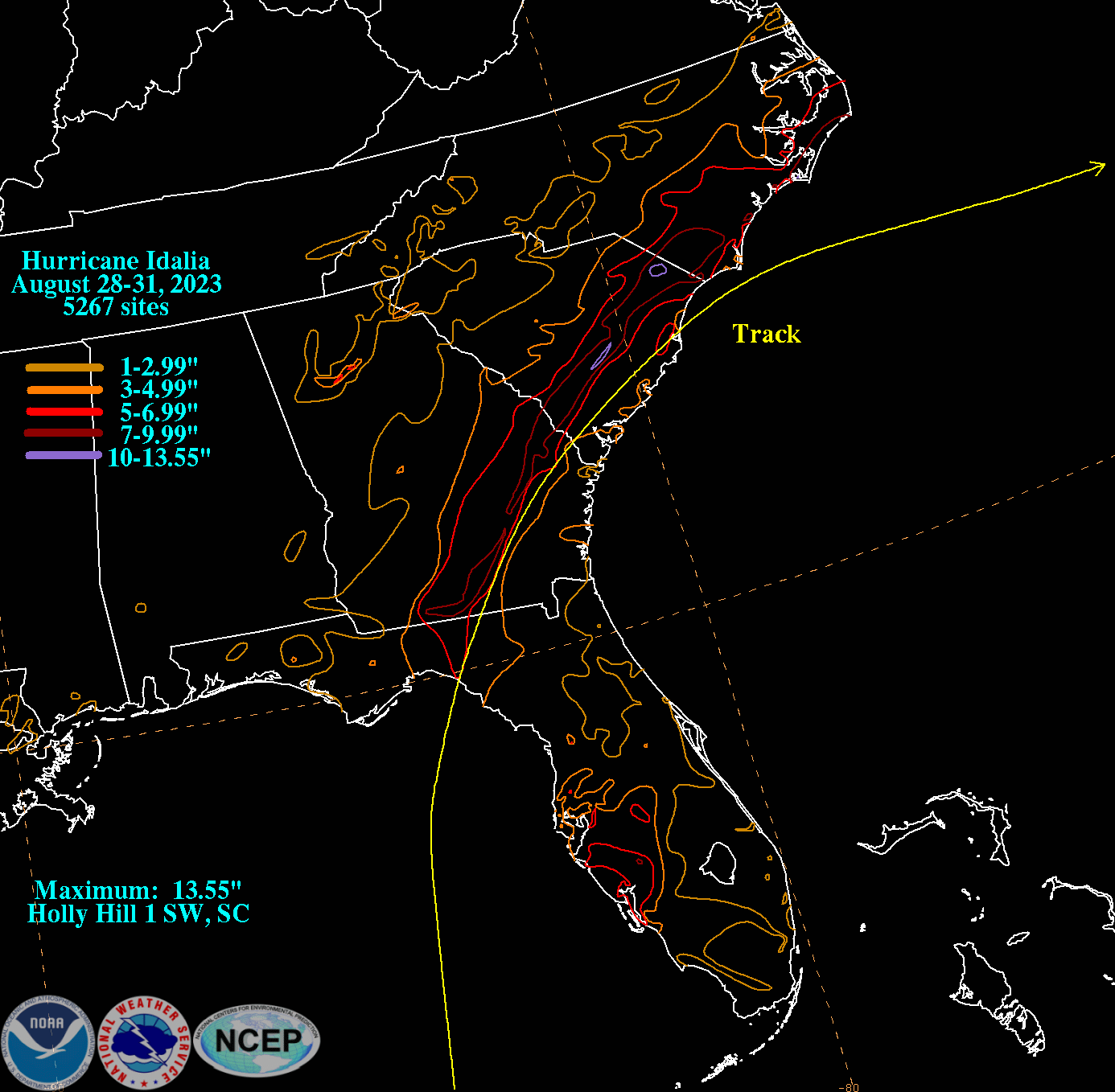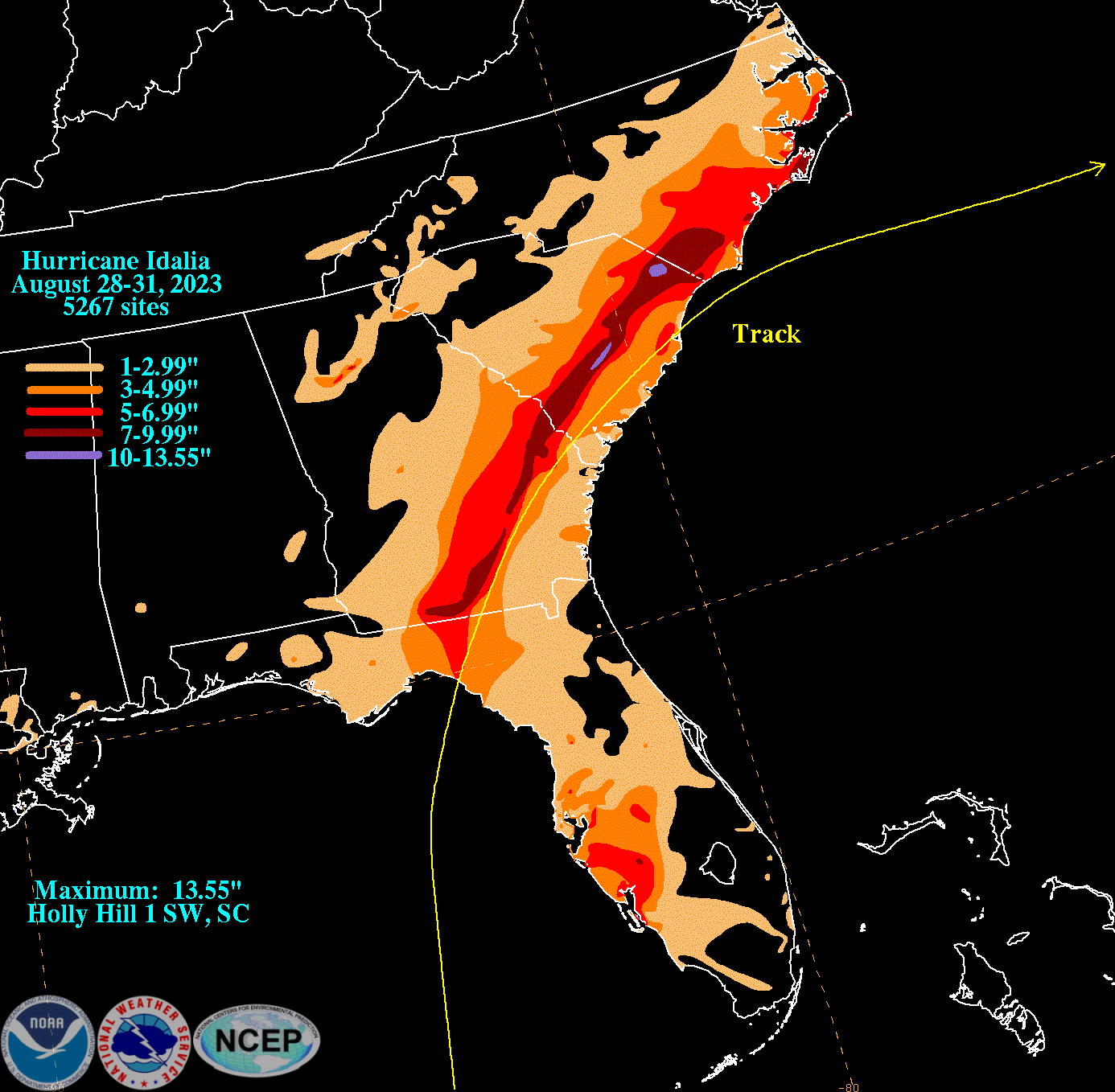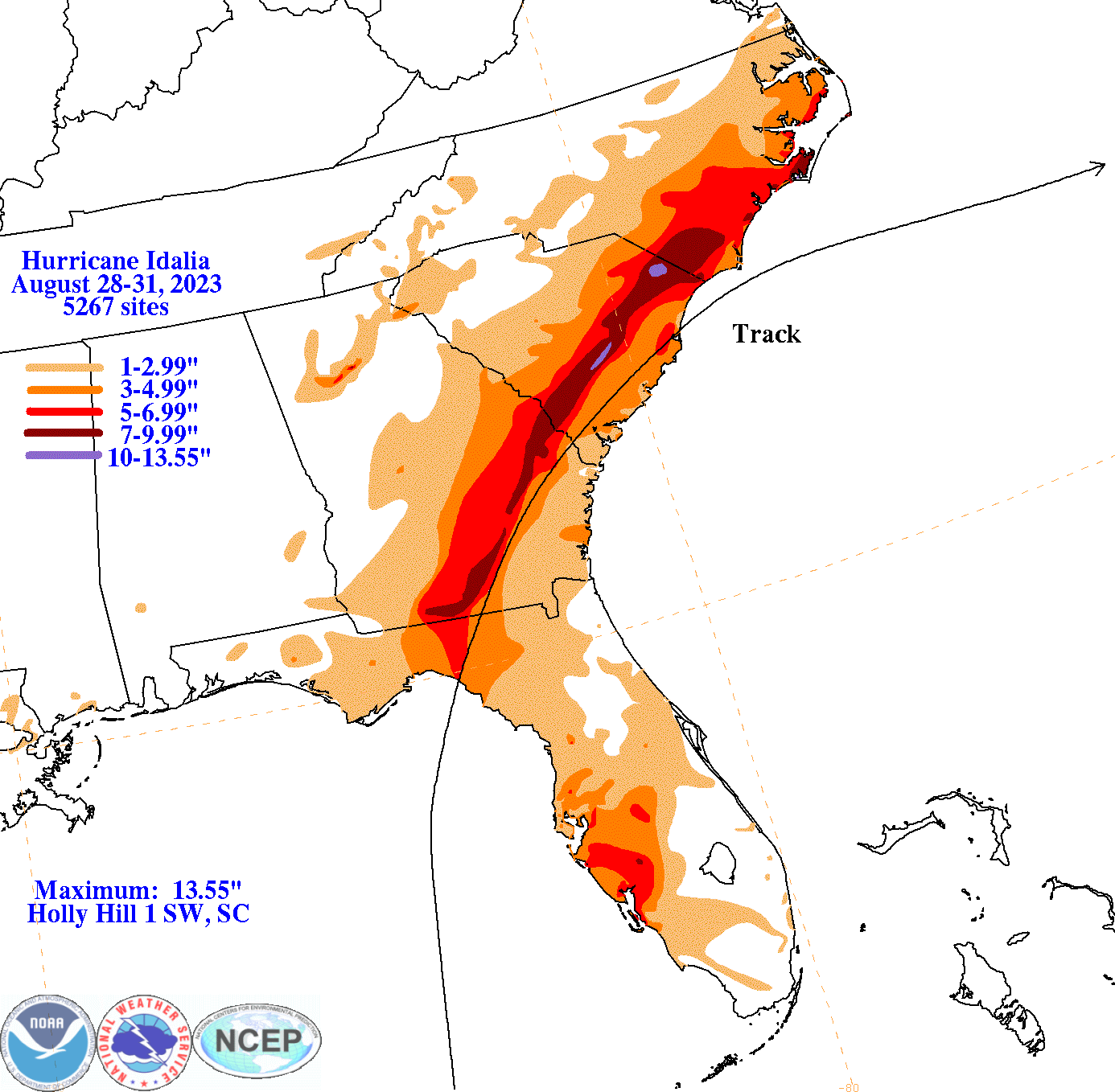A tropical disturbance had formed offshore the western coast of Central America on August 24th. It crossed northward, causing the formation
of an area of low pressure across the northwest Caribbean Sea by the 26th. That afternoon, while dawdling offshore the Yucatan Peninsula,
the system became a tropical depression. Under an environment with some vertical wind shear, the depression strengthened into a tropical storm
on the morning of the 27th. By the morning of the 28th, Idalia began to move northward, while slowly strengthening and entering the Yucatan
Channel. By the morning of the 29th, while clearing the western tip of Cuba, Idalia became a hurricane. Vertical wind shear decreased and
Idalia strengthened quicker, becoming a major hurricane on the morning of the 30th, peaking in intensity while moving north-northeast in the
northeast Gulf of Mexico. An eyewall replacement cycle caused weakening prior to landfall, but Idalia tied as strongest known hurricane to
strike the coast south of Perry; the other occurred in September 1896. Idalia veered northeast across southeast Georgia while beginning to
undergo extratropical transition as a tropical storm. Just after moving offshore South Carolina on morning of the 21st, Idalia was fully
extratropical, and the post-tropical cyclone moved by Bermuda on September 2nd and then moved north, lingering off the coast of Atlantic
Canada from the 4th through the 8th. Idalia then moved east to east-northeast across the North Atlantic, restrengthening west and northwest
of Great Britain on the 13th, and was last seen leaving the OPC surface analysis area northwest of Norway on the 15th.
The graphics below show the storm total rainfall for Idalia, which used rain gage information from National Weather Service River Forecast
Centers, xMACIS2, National Weather Service Forecast Offices, and CoCoRAHS.
 |
 |
 |